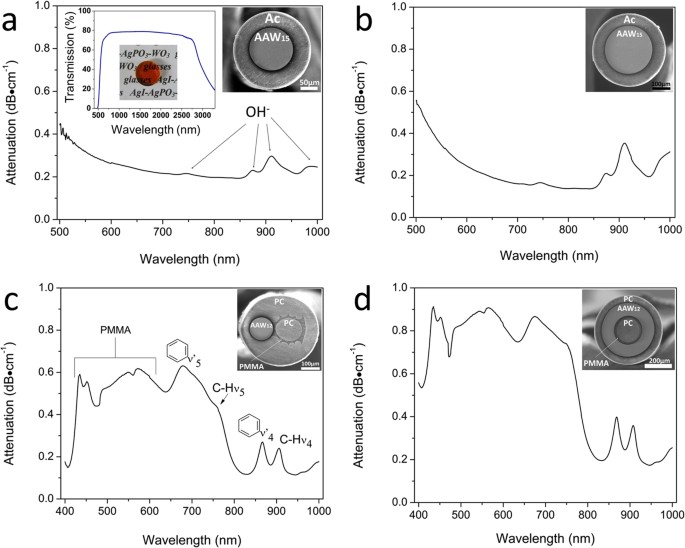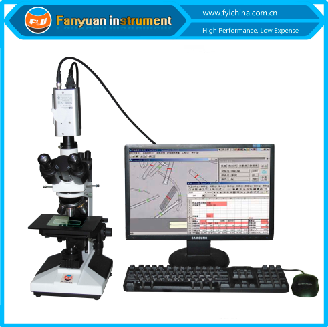Explore the Ideal Optical Fibre Diameter Analyser for Your Business
Explore the Ideal Optical Fibre Diameter Analyser for Your Business
Blog Article
Optimize Your Fibre Optic Performance: Understanding Optical Fiber Size Analyser Modern Technology
The efficiency of fibre optic systems is critically affected by the precision of their diameter, an aspect frequently forgot in the quest of ideal signal stability. Recognizing the modern technology behind optical fibre diameter analysers discloses the detailed balance between dimension precision and production top quality. These gadgets not just enhance compliance with industry standards but likewise supply real-time understandings that can preemptively resolve prospective problems. However, the effects of their usage extend past simple dimension; they can basically change the landscape of fibre optic performance. What factors should one take into consideration to harness their complete potential?
Significance of Optical Fiber Size
The diameter of optical fiber plays a crucial function in figuring out the efficiency and efficiency of communication systems. On the other hand, smaller sized sizes often tend to sustain fewer modes, which can enhance signal clarity and lower crosstalk.

Moreover, comprehending the diameter's implications can bring about cost savings by minimizing the demand for signal boosting and repeaters in substantial networks (optical fibre diameter analyser). Finally, the value of optical fiber diameter can not be overemphasized, as it directly impacts the general efficiency and reliability of modern interaction systems

Exactly How Size Influences Signal Quality
Signal top quality in optical fibre systems pivots dramatically on the size of the fibre. The diameter affects a number of key criteria, including attenuation, bandwidth, and modal diffusion. A smaller sized diameter can result in higher depletion prices, causing signal loss as light journeys through the fiber. This attenuation can compromise the stability of the transmitted information, resulting in a decrease in signal high quality, particularly over long ranges.
Conversely, bigger sizes normally enable boosted light capture and minimized modal diffusion, enhancing signal quality. In multimode fibers, a bigger core diameter can sustain several light modes, however it may likewise present intermodal diffusion, which can deteriorate signal top quality. As a result, picking the optimal fibre size is important for achieving the wanted performance in certain applications.
Moreover, the interaction between the fibre size and the wavelength of the light utilized plays a critical function in establishing the efficient transmission distance and total signal honesty. Therefore, understanding exactly how fibre size impacts signal high quality is important for network designers and designers aiming to optimize optical fiber systems for trusted, high-speed data transmission.
Overview of Diameter Analyser Technology
In lots of optical fiber production processes, accurate measurement of fiber size is vital for making certain regular performance and quality (optical fibre diameter analyser). Diameter analysers are advanced tools designed to assess web link the physical dimensions of optical fibres with high accuracy. They utilize sophisticated optical and laser technologies to determine the size, ovality, and concentricity of the fiber, hence giving essential information for quality control
These analysers can run in-line during the manufacturing process or as part of off-line screening protocols. In-line systems enable real-time tracking, permitting suppliers to change parameters instantly, thus keeping optimum manufacturing conditions. Off-line analysers, on the other hand, supply detailed assessments of sets, ensuring that any inconsistencies from specified resistances are determined and attended to.
Diameter analysers dramatically add to the reduction of flaws in optical fibers, improving overall item integrity. By regularly measuring key parameters, these innovations facilitate compliance with industry criteria and specs. As the need for high-performance optical fibers remains to rise, the function of size analysers ends up being progressively important in attaining the desired top quality and efficiency standards in fiber optic systems.
Secret Features of Fiber Size Analysers
Although various versions of fibre size analysers exist, they generally share numerous essential attributes that improve their functionality and dependability. One of one of the most considerable functions read is high-resolution measurement capabilities, which make sure accurate size analyses, essential for keeping quality assurance in fiber production. Furthermore, numerous analysers include sophisticated optical sensors designed to find minute variations in fibre diameter, thus supplying vital data for procedure optimization.
An additional essential attribute is real-time monitoring, enabling drivers to receive instant feedback on fiber diameter throughout the production procedure (optical fibre diameter analyser). This capacity assists in fast changes and reduces the chance of problems. Several analysers additionally come equipped with user-friendly user interfaces, making it possible for drivers to quickly navigate with data and setups results
In addition, durable information storage and analysis capabilities are crucial for tracking historical performance trends and guaranteeing compliance with sector standards. These features jointly contribute to the efficiency of fiber diameter analysers in maximizing fibre optic efficiency.
Best Practices for Fibre Optimization

First, regular calibration of optical fiber diameter analysers is important. This makes certain exact dimensions and minimizes possible inconsistencies that could influence performance. Next off, keeping a clean working atmosphere is vital; dirt and contaminants can lead to indicate degradation.
In addition, it is essential to select fibres that satisfy details application requirements. This includes evaluating aspects such as attenuation, data transfer, and ecological conditions. Appropriate setup techniques must also be followed, consisting of avoiding sharp bends and extreme stress, which can compromise fibre honesty.
Furthermore, utilizing innovative monitoring systems can help with real-time efficiency analyses, allowing punctual identification of problems. Regular testing and maintenance must be conducted to make sure that fibres stay within optimum operational parameters.
Lastly, training personnel on the most up to date fibre optimization technologies and methodologies will certainly boost their capacity to apply reliable strategies. By following these best techniques, organizations can considerably improve the performance and life-span of their optical fibre systems, ensuring efficient interaction and data transfer.
Final Thought
Finally, the integration of optical fiber size analyser innovation is vital for maximizing fiber optic efficiency. By making certain specific dimensions of fibre measurements, these analysers substantially boost signal high quality and lower losses throughout data transmission. Normal calibration and upkeep of the analysers are Resources important to support optimum performance and conformity with market standards. Inevitably, the application of this innovation helps with improved data transmission rates and reinforces signal honesty, adding to the general efficiency of fibre optic systems.
Signal quality in optical fiber systems hinges substantially on the diameter of the fiber.In lots of optical fiber manufacturing procedures, precise measurement of fiber diameter is vital for ensuring constant efficiency and top quality. As the demand for high-performance optical fibres proceeds to rise, the duty of diameter analysers ends up being significantly vital in achieving the desired quality and efficiency standards in fiber optic systems.
These features collectively contribute to the effectiveness of fiber diameter analysers in enhancing fiber optic efficiency.
In conclusion, the assimilation of optical fibre size analyser modern technology is crucial for maximizing fiber optic performance.
Report this page